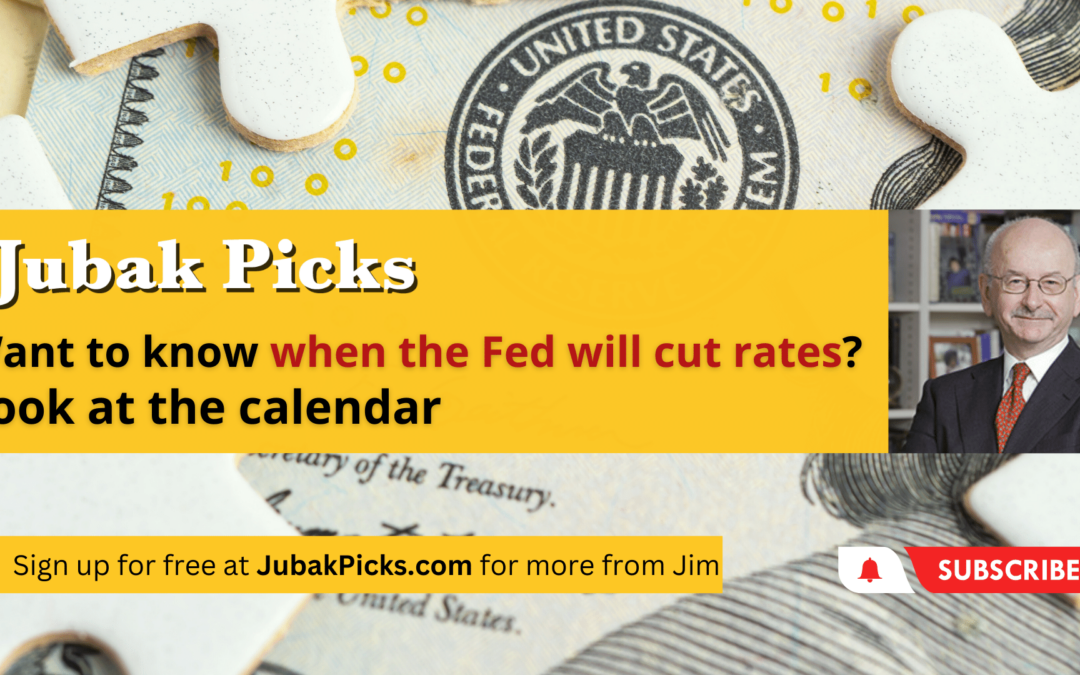
May 19, 2024 | Daily JAM |
Today’s video is The Uncertainty of Uncertainty in the Stock Market. Right now we’re seeing uncertainty on top of uncertainty. The CPI numbers just came out and April showed a slightly lower annualized inflation rate than March. The market took this as a signal that we’ve moved past inflation stagnation and have resumed the march towards 2%. This is, of course, an uncertainty. Another uncertainty is the what we don’t know about the inner thinking at the Fed. How much of a decline does the Fed really need to see to start cutting rates? Right now, according to the CME Fedwatch tool, there is a 70% chance that we’ll see interest rate cuts at the September Fed meeting. This prediction has shifted a lot in the last few months and could continue to shift. These uncertainties mean that the market may be fully priced at 5,200. Some analysts suggest we could hit 5,600 by the end of the year, making it a 15-20% year. In the short term, it’s really hard to predict how people react to all these layers of uncertainty. It’s also difficult to hedge this market so I recommend looking at individual stocks in lithium or copper that will continue to go up, even if the market as a whole doesn’t move.

May 15, 2024 | Daily JAM, Morning Briefing |
Today, May 15, the April Consumer Price Index report dangled new hope in front of investors. The all-items index annual rate of inflation dropped to an annual 3.4% rate from 3.5% in March. The core index, which leaves out food and energy prices, fell to an annual rate of 3.6%, down from 3.8% in March. Those annual rates are still way above the Federal Reserve’s inflation target of 2%. But after three straight reports where the inflation rate came in above market expectations todays report, which hit projections right on the mark, came as good news. In recent weeks Wall Street has speculated that inflation is set to resume its downward course starting with the April report. And after stalling above 3.5%, annual inflation would resume its downward path.

May 14, 2024 | Daily JAM, Morning Briefing, Short Term |
Granted that the remarks weren’t delivered at the most high profile venue–a panel discussion at the Foreign Bankers Association meeting in Amsterdam–but I read Federal Reserve chairmen Jerome Powell as saying that the U.S.central bank might hold interest rates steady for longer than now expected by WallStreet. Ahead of new inflation data from the Consumer Price Index for April due tomorrow, anyway. On the day before the meeting economists were expecting the annual inflation rate at both the all-time and core levels to have dropped by 10 or 20 basis in April

May 10, 2024 | Daily JAM, Videos |
Today’s video is How big a danger is consumer debt? The Federal Reserve has been slowly trying to get inflation down one more percentage point by slowing the economy (without crashing it). One of the things the Fed looks at is how consumers are doing. Consumer revenue is about 70% of the overall economy and consewuently the Fed has been keeping an eye on consumer debt. At the moment, debt as we can measure it, is at a high level with credit card delinquencies at 3.5% in December 2023, the highest since the current data series istarted in 2012. But that number doesn’t capture everything gong on with consumer debt since the increasingly popular Buy Now, Pay Later products aren’t included in the big consumer debt measurements. Thes products let people stretch or delay payments by cutting them into installlments. The Buy now/pay later market is currently only about $18 billion but is projected to hit $700 billion by 2029. What’s th deliquency ratw for Buy now/pay later? No one knows because the companies providing Buy Now, Pay Later programs don’t report delinquencies to credit bureaus. Anecdotally, the delinquwncy rate seems high. A Bloomberg survey found that about 43% of people in Buy Now, Pay Later programs say they’re behind or feeling pressure on their payments. 28% say they’re delinquent on other debt as a result of these payments. Th Fed faces a tough enough job of sailing the economy to a safe harbor without having to steer blind n a big and growing part of the markrt for consumer debt. My worry is that the economy may be slowing faster than the Fed would hope or can accurately measure. Keep an eye on this as the Fed continues to push rate cuts further and further down the road.

May 5, 2024 | Daily JAM |
I expect surface quiet but important movement in the lower depths of the financial markets. The week ahead lacks in obvious market-moving events and reports. There’s a smattering of earnings with Disney (DIS) on May 7 and Toyota Motor (TM) on May 8. But nothing from the likes of Apple (AAPL) or Microsoft (MSFT). A few speeches from Federal Reserve officials–Fed governors Lisa Cook on May 8 and Michelle Bowman on May 10. But no Fed meeting. No testimony from Fed chair Jerome Powell. But deep in the workings of the bond market, this will be a big week. The Treasury will auction $112 billion in Treasury paper.

May 4, 2024 | Daily JAM, Short Term |
The U.S. economy added 175,000 jobs in April, the Bureau of Labor Statistics announced on Friday. That was the smallest number monthly new jobs in six months. The unemployment rate ticked up to 3.9%. And traders tried once again, to get ahead of the data. Concluding that slower job growth, meant the Federal Reserve would be more likely to cut interest rates sooner–in September, say, rather than November or December–bonds rallied and yields fell. The yield on the 10-year Treasury dropped 7 basis points to 4.5%. The yield on the 2-yer Treasury, which had been flirting with 5% earlier in the week, fell to 4.82%. Stocks climbed with the Standard & Poor’s 500 up 1.26% and the NASDAQ Composite gaining 1.99%. Trouble is that these moves were the exact opposite of gains and losses earlier in the week.
May 2, 2024 | Daily JAM, Morning Briefing, Short Term |
On Wednesday, May 1, the Federal Reserve decided NOT to cut interest rates at its May 1 meeting. That was the decision expected by the financial markets. And Federal Reserve chair Jerome Powell tried his best to keep traders from speculating that the Fed would actually raise interest rates, rather than cut them, in the remainder of 2024.

April 30, 2024 | Daily JAM, Morning Briefing |
The employment cost index (ECI), which measures wages and benefits, increased 1.2%, the most in a year, after rising 0.9% at the end of 2023, according to a report from Bureau of Labor Statistics on Tuesday, April 30. The increase was greater than projected by any economist in Bloomberg’s survey of economists.Compared with a year earlier, the ECI, the Fed’s preferred measure of employment costs, climbed 4.2% after a similar annual increase in the fourth quarter.

April 26, 2024 | Daily JAM, Mid Term, Morning Briefing |
Yesterday we had a report of core Personal Consumption Expenditure for March that showed core inflation ticking up to an annual rate of 3.8% from 3.7%. Core inflation, if you remember, looks at prices after excluding more volatile food and energy prices, The reasonable conclusion was that inflation was remaining stubbornly higher than the Federal Reserves % target. And that the first cut to interior rates from the Fed wouldn’t come until December, instead of July or September. Today we got the report on all-items PCE inflation.

April 25, 2024 | Daily JAM, Mid Term, Morning Briefing |
How views on interest rates have changed since the start of 2024. Then, in January, the consensus view called for as many as six interest rate cuts from the Federal Reserve in 2024 for a total of 150 basis points in cuts to the Fed’s benchmark interest rate. Today, after a dip in first quarter GDP below a 2% annual rate and an uptick in core PCE inflation, the markets are pricing in just 33 basis points in rate cuts and quite possibly no cut until the Fed’s December 18 meeting.

April 25, 2024 | Daily JAM, Morning Briefing, Short Term |
U.S. economic growth slowed in the first three months of the year, the Bureau of Economic Analysis reported today. Gross Domestic Product (GSP) grew at an annualized rate of just 1.6%. That’s a big retreat from the 3.4% annual rate in the fourth quarter of 2023. Just as important as the drop in the growth rate itself is the reason for the decline.

April 17, 2024 | Daily JAM, Videos |
Today’s video is Want to know when the Fed will cut rates? Look at the calendar. The Fed only has so many meetings left for 2024 and even fewer if you only coun those with Dot Plot updates of the Fed’s economic projections. The Fed is on the verge of a major shift in policy and the U.S. central bank almost never makes a big policty shift at a meeting without an update of its economic projections.. Early in the year, people were looking for up to five cuts, now, sentiment has shifted to one or fewer. If we get a rate cut at all, when will it be? Look at which upcoming Fed meetings include Dot Plots. The Fed doesn’t like to surprise investors and if they make a drastic change, like a shift to rate cuts, you can bet they want to do it while they’re also discussing projections for 2024 and 2025. The.CME Fedwatch Tool currently odds for the next meeting, May 1, at a 98% chance of no cut and the June meeting is now up to an 84.8% chance of no cut. The June meeting WILL have a Dot Plot and, up until recently, the finanial markets believed that meeting that would deliver the news. Because the Fed generally likes to give in-depth information during a big policy shift, it’s unlikely that the rate cut will be in July, since no dot Plot economic pdate is scheduled for that meeting. The next real chance of a rate cut, I think, is September 18, which has a Dot Plot. (There is no August Fed meeting.) The market thinks there will be a cut in September, and CME Fedwatch has the odds of no cut at that meeting at just 32.7%. A second rate cut in 2024 would have to be at the December 18 meeting, the final 2024 meeting with a Dot Plot. (The Fed doesn’t meet in Ocrober and the November meeting does include a Dot Plot update.) Without the September cut, it’s very unlikely there will be two cuts in 2024. Unless inflation data changes a lot, I doubt we’ll have two rate cuts, but we can look for one in September or December at this point.












